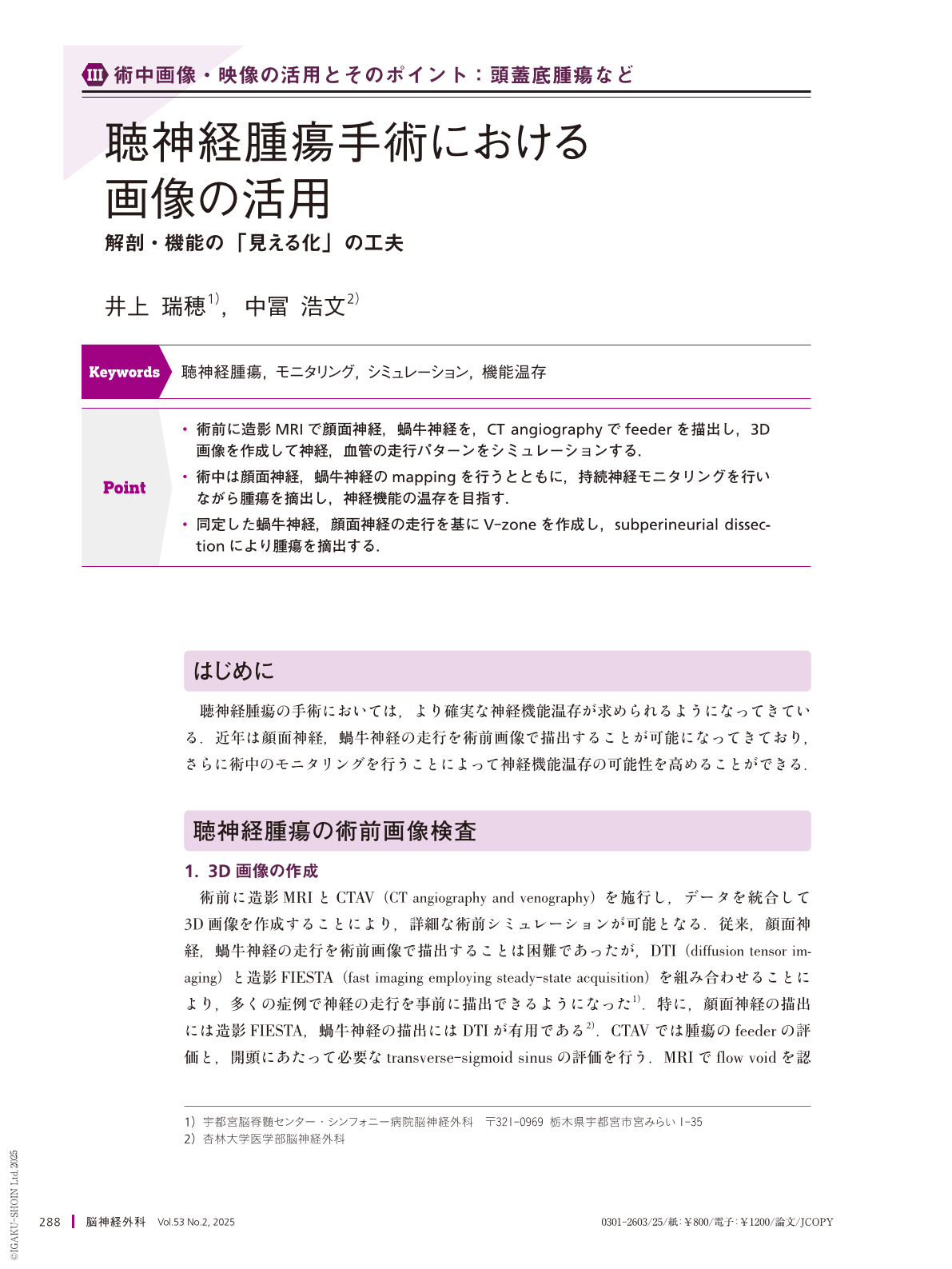Japanese
English
- 有料閲覧
- Abstract 文献概要
- 1ページ目 Look Inside
- 参考文献 Reference
Point
・術前に造影MRIで顔面神経,蝸牛神経を,CT angiographyでfeederを描出し,3D画像を作成して神経,血管の走行パターンをシミュレーションする.
・術中は顔面神経,蝸牛神経のmappingを行うとともに,持続神経モニタリングを行いながら腫瘍を摘出し,神経機能の温存を目指す.
・同定した蝸牛神経,顔面神経の走行を基にV-zoneを作成し,subperineurial dissectionにより腫瘍を摘出する.
Functional preservation is increasingly emphasized in vestibular schwannoma surgery. Achieving this requires preoperative imaging, intraoperative cranial nerve monitoring, and adequate dissection of the layers. High-resolution magnetic resonance imaging, including diffusion tensor imaging and contrast-enhanced fast imaging employing steady-state acquisition, allows preoperative visualization of the facial and cochlear nerve courses. Additionally, three-dimensional (3D) reconstructed images aid in simulating nerve trajectories relative to tumors within the surgical field. The facial and cochlear nerves were identified intraoperatively through direct observation or electrical stimulation. Preoperative 3D simulations facilitate the identification of nerves and reduce the risk of nerve injury. Tumor resection should begin from the safer petrous side, and sufficient debulking improves the visualization of the tumor-brainstem interface. Identifying the subperineural cleavage plane in the V-zone is crucial to establish an optimal dissection layer for maximum safe resection. However, continuous facial and cochlear monitoring is essential for detecting potential nerve damage. If necessary, the dissection plane should be adjusted, leaving a thin tumor layer to prevent nerve injury. This study provides practical insights into the optimization of imaging use in vestibular schwannoma surgery for functional preservation.

Copyright © 2025, Igaku-Shoin Ltd. All rights reserved.


